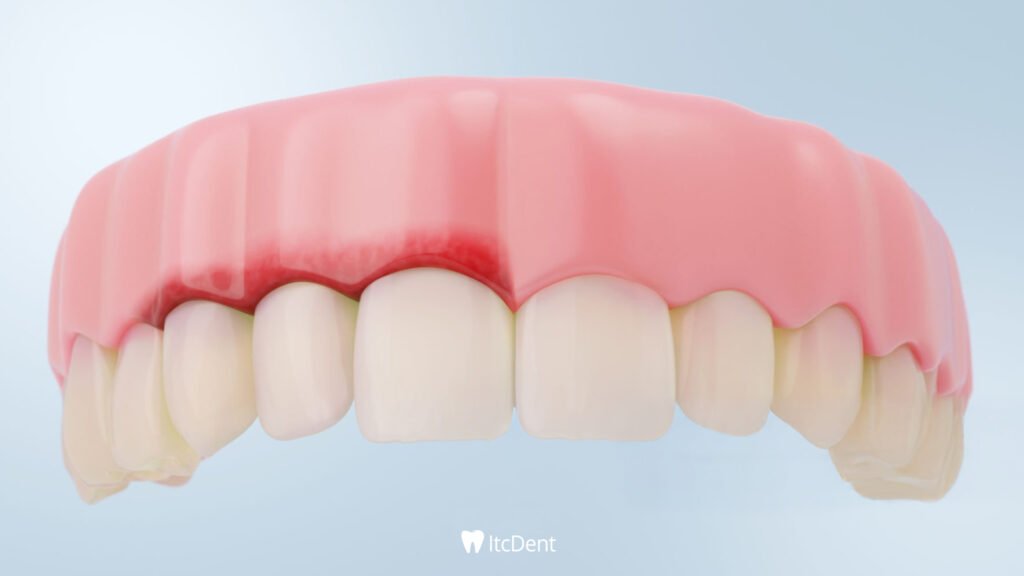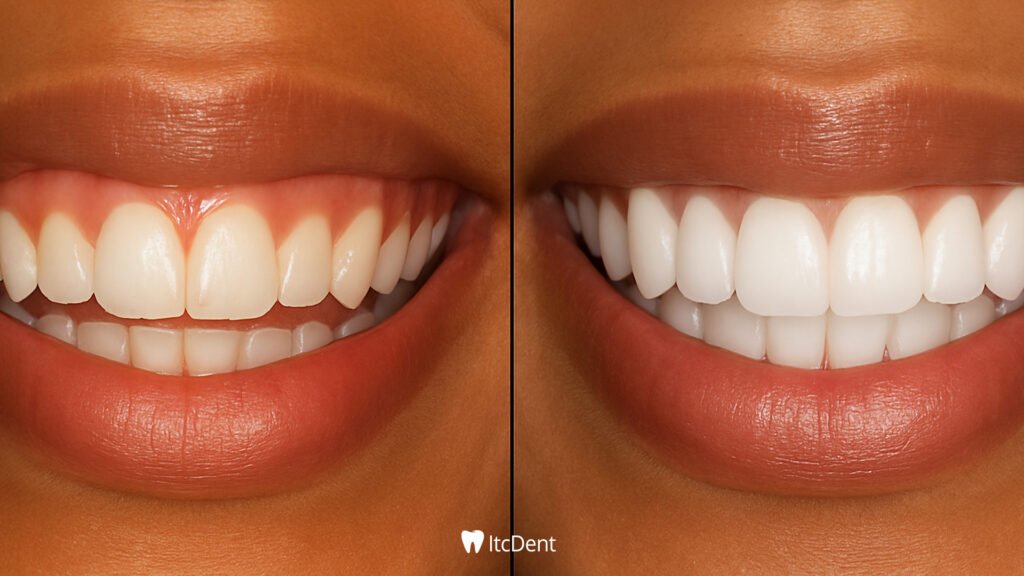What is a Gummy Smile?
Smiling is like a universal language in human interactions. It’s one of the most natural gestures that convey warmth, sincerity, and trust. However, smiling may not be equally pleasurable for everyone. A condition known medically as a “gummy smile,” where the gums are more visible than normal when smiling, can cause aesthetic concerns in some people.
While a gummy smile doesn’t usually pose a serious health problem, it can directly impact a person’s self-confidence and social life. Someone who wants to express themselves freely may be tempted to hide their smile due to excessive gum exposure. This can lead to a person becoming less socially visible or experiencing persistent self-consciousness when smiling.
With the development of cosmetic dentistry in recent years, various treatment options have emerged for gummy smiles. This allows many people who are hesitant to smile to achieve a more aesthetically pleasing and balanced smile.
What is a Gummy Smile?
Smiling is often considered the most beautiful expression on a person’s face. However, for some people, smiling can actually be a source of anxiety. This is where the so-called “gummy smile” comes into play.
A gummy smile occurs when the gums show more than normal compared to the teeth when smiling. According to generally accepted criteria, if the gums show more than 2-3 millimeters when smiling, it’s defined as a gummy smile. While it may not seem like a serious health problem at first glance, it can be quite aesthetically disturbing.
Excessive gum exposure when smiling can create an imbalance in a person’s facial expression. While this is a completely natural change, it causes aesthetic concerns in many people. For example, some people may unconsciously try to cover their lips when taking photos, leave their smiles half-done, or hesitate to smile in public. Over time, this can lead to a loss of self-confidence in social settings.

One of the most important aspects of a gummy smile is that its perception varies from person to person. While some people don’t mind the visibility of their gums at all, for others, even the smallest detail can be a source of discomfort. So, the issue isn’t just about aesthetics; it’s also about how a person feels about themselves.
What Causes a Gummy Smile?
A gummy smile isn’t a single cause. Because each individual’s facial structure, teeth, and lip anatomy are different, the causes can vary from person to person. However, the most common causes can be explained as follows:
Differences in Gum Structure
Some people may have naturally thicker or overdeveloped gums. In this case, the teeth appear shorter than they actually are, even if they are of normal size. As a result, the gums are more prominent than the teeth when smiling.
Lip and Muscle Mobility
The muscles responsible for the movement of the upper lip are stronger or more active in some individuals. This causes the lip to lift more than normal when the person smiles, exposing the gums more than usual.
Jaw Structure and Bone Imbalances
A jawbone that is more upright or longer than normal can also cause a gummy smile. This disrupts the proportions of the teeth and gums to the face, creating an aesthetically unbalanced appearance.
Teeth Position and Structure
Some teeth may be impacted or shorter. In this situation, the teeth recede into the background, while the gums become more prominent. This can significantly affect the aesthetics of the smile, especially when it concerns the front teeth.
Orthodontic Problems
Crooked teeth, malocclusion, or improper tooth positioning can also contribute to the appearance of a gummy smile. These imbalances in tooth alignment can cause the gums to be overly prominent when smiling.

Why is a Gummy Smile Important Aesthetically?
Dental aesthetics are not limited to the whiteness or proper alignment of teeth. When designing a beautiful smile, the size, shape, symmetry, and even the visibility of the gums are crucial.
A gummy smile can disrupt the natural harmony of the smile and distort the facial expression. Short teeth or an imbalanced lip-to-gum ratio can create an aesthetically unappealing appearance, hindering the ability to express oneself freely.
For many, this isn’t just an aesthetic issue; it’s also about self-confidence. A beautiful smile makes one feel happier and more comfortable in social situations. Therefore, a gummy smile has become a sought-after solution for many.
Gummy Smile Treatment
The method used to treat gummy smile varies depending on the cause of the problem. While a relatively simple intervention is sufficient for some individuals, other cases may require more extensive and lengthy treatments. Here are the most commonly preferred methods:
Botox Application
For individuals with overactive upper lip muscles, Botox is one of the most practical solutions. Botulinum toxin injections partially limit the movement of the lip muscles. This prevents the lips from lifting too much, and the gums are less visible. The procedure takes only a few minutes, and the effects last for an average of 4-6 months. Therefore, it is a highly preferred method for those seeking an easy and quick solution.
Laser or Surgical Gingivectomy
If the problem stems from excessive gum prominence, the excess gum tissue can be surgically removed. Laser procedures are often preferred because they are more comfortable and have a faster recovery time. This procedure can lengthen the teeth, making the smile more balanced and aesthetically pleasing.
Orthodontic Treatments
In some individuals, a gummy smile is caused by irregularities in the jaw structure or misaligned teeth. In such cases, orthodontic treatment is necessary. The teeth are positioned correctly with braces or clear aligners. In more advanced cases, orthognathic surgery, also known as jaw surgery, may be necessary.
Surgical Lip Repositioning
Another method for controlling excessive lip muscle movement is surgical intervention. The upper lip is positioned within a certain range, preventing it from lifting too high. This minimizes the visibility of the gums during smiling.

Does Gummy Smile Treatment Hurt?
One of the most frequently asked questions by those considering gummy smile treatment is, “Is it painful?” In fact, thanks to modern methods used today, these treatments can be performed quite comfortably.
For example, Botox is a virtually painless and quick procedure. In the case of laser shaping of the gums, local anesthesia is administered, and the patient feels no pain during the procedure.
For surgical procedures, anesthesia is also administered, preventing any pain. While there may be some mild post-procedural sensitivity, this is temporary and quickly subsides if the doctor’s recommendations are followed.
In general, gummy smile treatment is not a challenging process. When performed with the right techniques and by expert hands, patients can comfortably complete the treatment and easily return to their daily lives after recovery.


